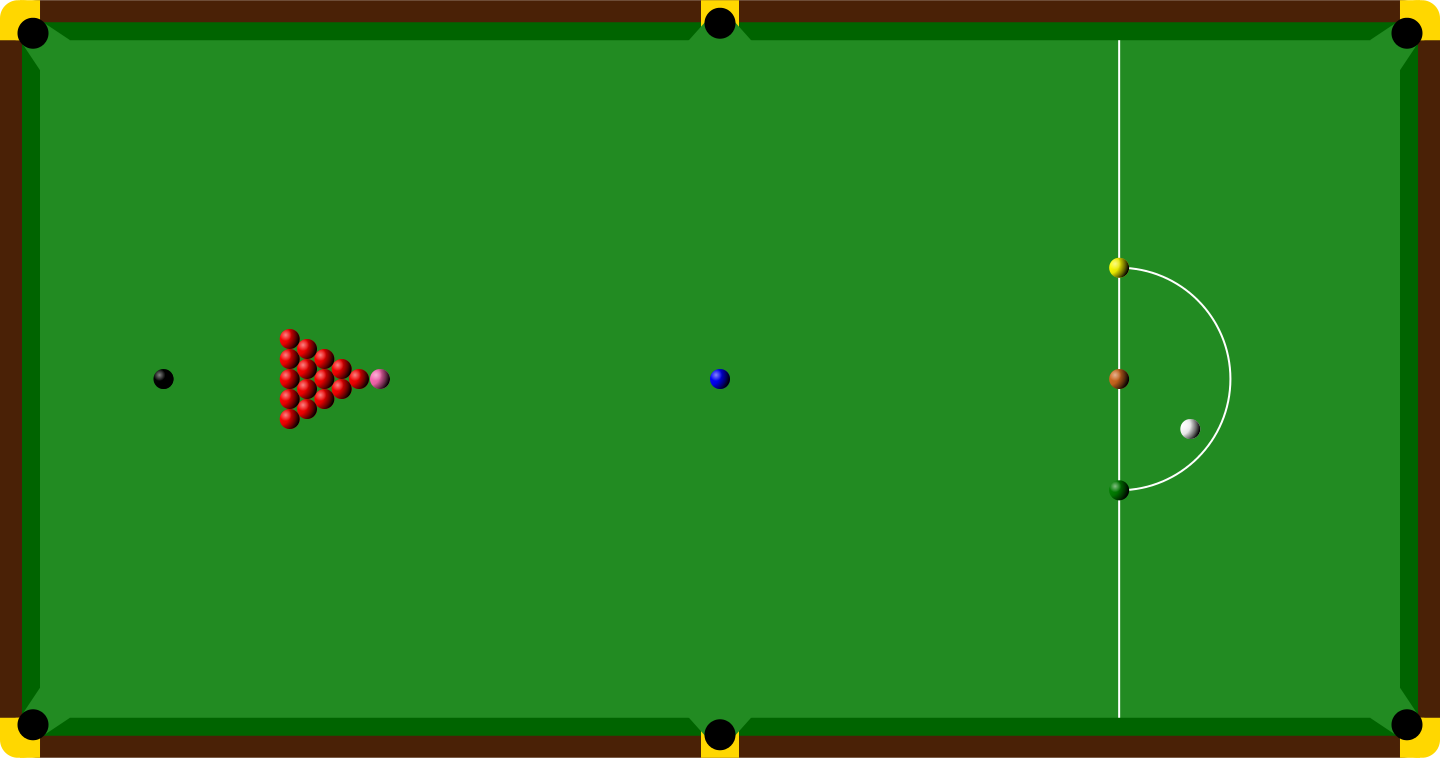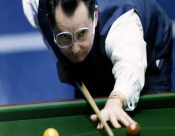Snooker
14 Matched Riley Tables

We have 14 Superior Matched Riley Tables in our club. These unique tables were manufactured in 1928 and have been lovingly maintained to the highest standard ever since. Every World Champion that has played at our club has commented on how good they are to play on.
Riley Snooker Tables
Established in 1897 Riley was originally a sports shop in Manchester, England. By 1912 they had diversified and were making snooker tables in Accrington, England.
Within a short time they were producing over 4000 hand made snooker tables every year. These tables are still considered to be one of the best snooker tables available on the market.
Our tables were hand made 93 years ago and are still as good as the day they were made.
The Basic Rules to Playing Snooker
Snooker is a game played on a perfect flat covered table with pockets in each corner and the middle of each side. At the start of the game balls are arranged in a particular formation. There are 15 red balls that form a triangle (this can be less than 15 but usually forms a triangle, 6 or 10 are most common). There are also 6 coloured balls (Black, Pink, Blue, Brown, Green & Yellow) and a white "Cue" ball. Each coloured ball has it own spot on the table with the pack of reds directly behind (but not touching) the pink ball (as shown below). The table has a straight white line marking known as the baulk-line, and a semi circle in the middle of the baulk-line known as the "D". There are 3 spots along the straight edge of the D that are placements for the yellow, green & brown balls (as shown below). In the middle of the table is a spot for the blue ball followed by the pink and black balls with the reds tight behind the pink. The game is played using along wooden stick known as a "Cue"

The game is predominantly played with 2 players but can also be played by 4 as doubles. The game is started with the cue ball (white) placed anywhere in the D of the players choosing. The obect of the game is to score more points than your opponent with points being scored by pocketing red and coloured balls. The player must fist pocket a red ball followed by any of the 6 other coloured balls. The "on" ball is the ball the player must hit first or pocket. When one of the 6 coloured balls is pocketed it is placed back on the table on its starting spot before the next shot is taken. When there are no more reds on the table the coloured balls are not put back in play.
At the start all the reds are "on", the starting player places the white ball in the D and, using the cue, strikes the pack of reds with the white ball. This is known as the "break-off" shot. More often than not a player will try to skim the white ball lightly off the pack before returning to the baulk end. This is a very common safety tatic, if you cannot pocket a ball you try to leave it as difficult as possible for your opponent. If the correct ball is pocketed the player has another shot, if they miss (or foul) play is handed to their opponent. Once a red is pocketed the player must nominate one of the 6 colours as the "on" ball. Each ball pocketed gives a different points value.
- Red = 1
- Yellow = 2
- Green = 3
- Brown = 4
- Blue = 5
- Pink = 6
- Black = 7
If the players pockets the nominated colour the ball is returned to the table and any of the remaining reds become the next "on" ball. The player continues the red colour potting pattern until they miss the pocket or commit a foul (for example missing the "on" ball with the white). Once the last red has been pocketed and the nominated colour to follow, the player must pocket the 6 colours in order. Yellow, Green, Brown, Blue, Pink and finally the black. The person (or team) with the most accrued points wins the game.
A full and more detailed breakdown of the rules can be found here (PDF).



